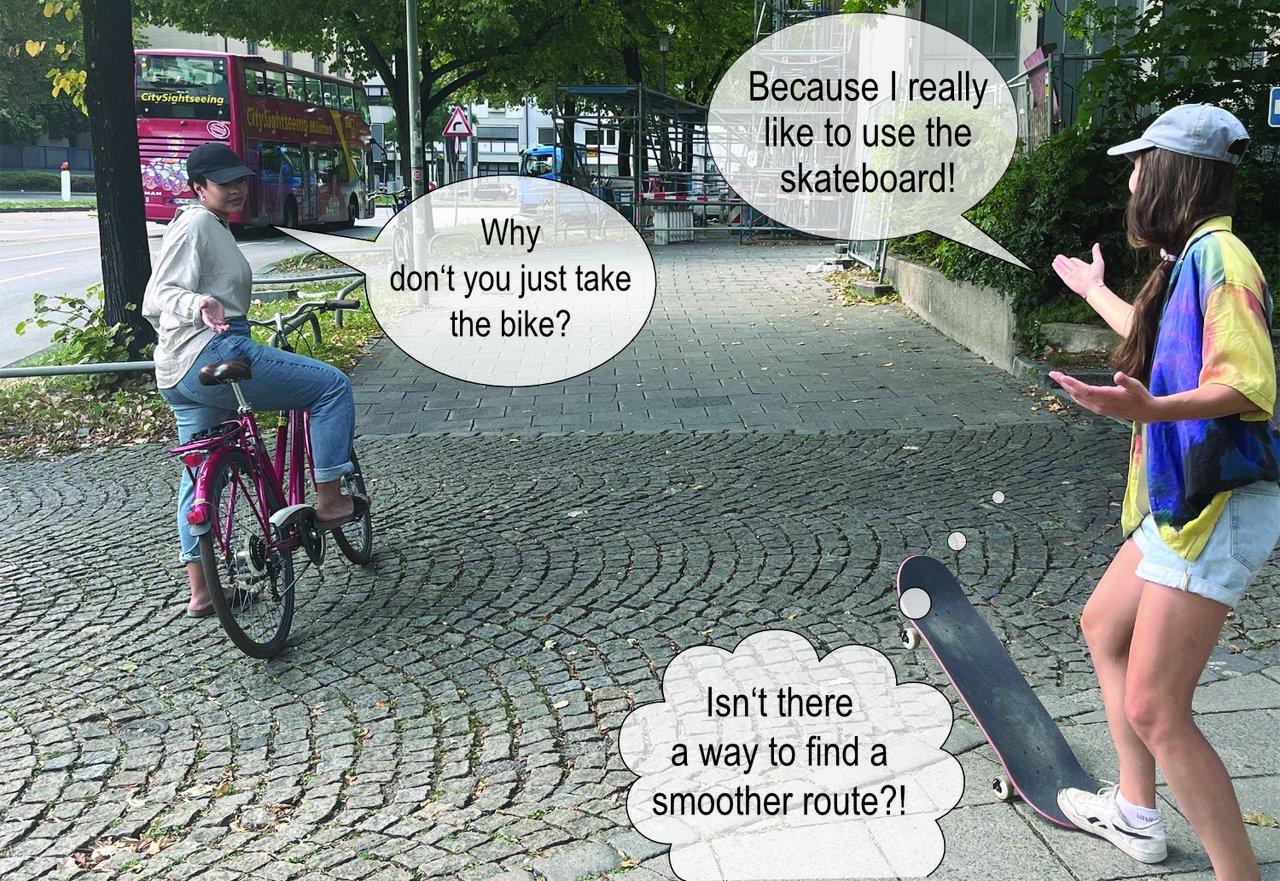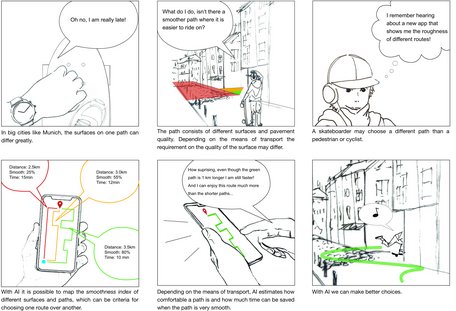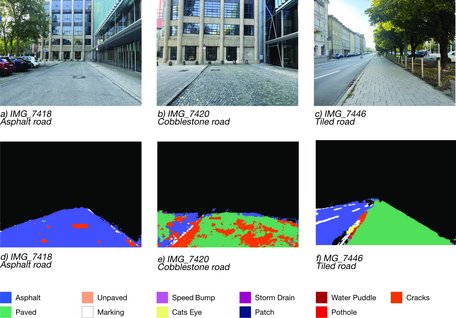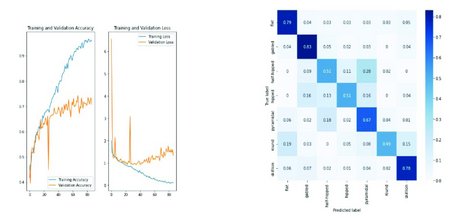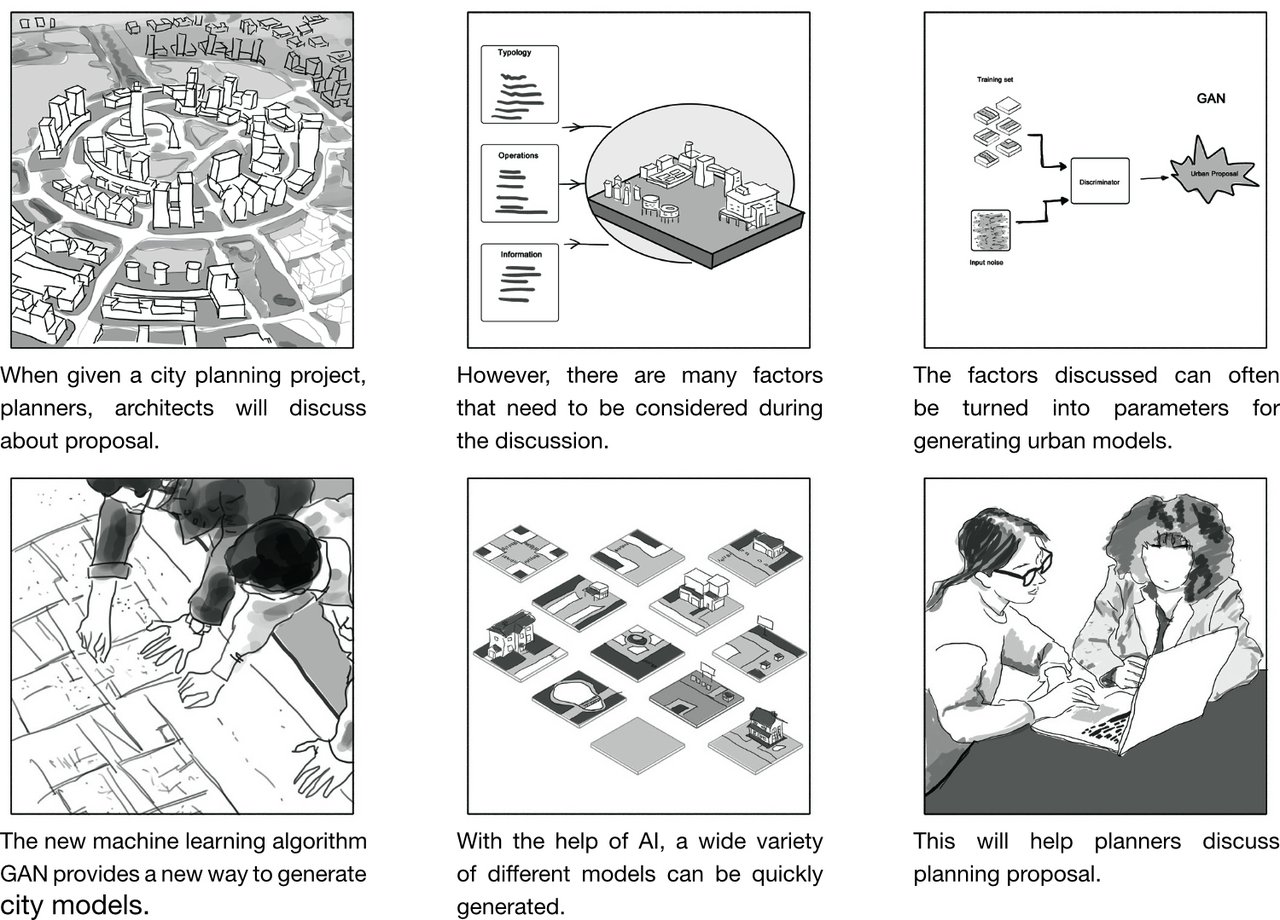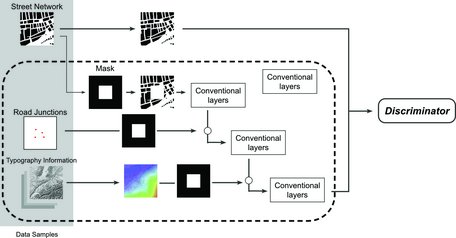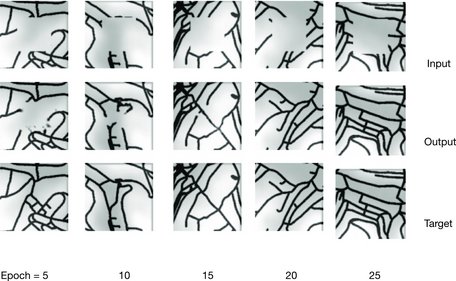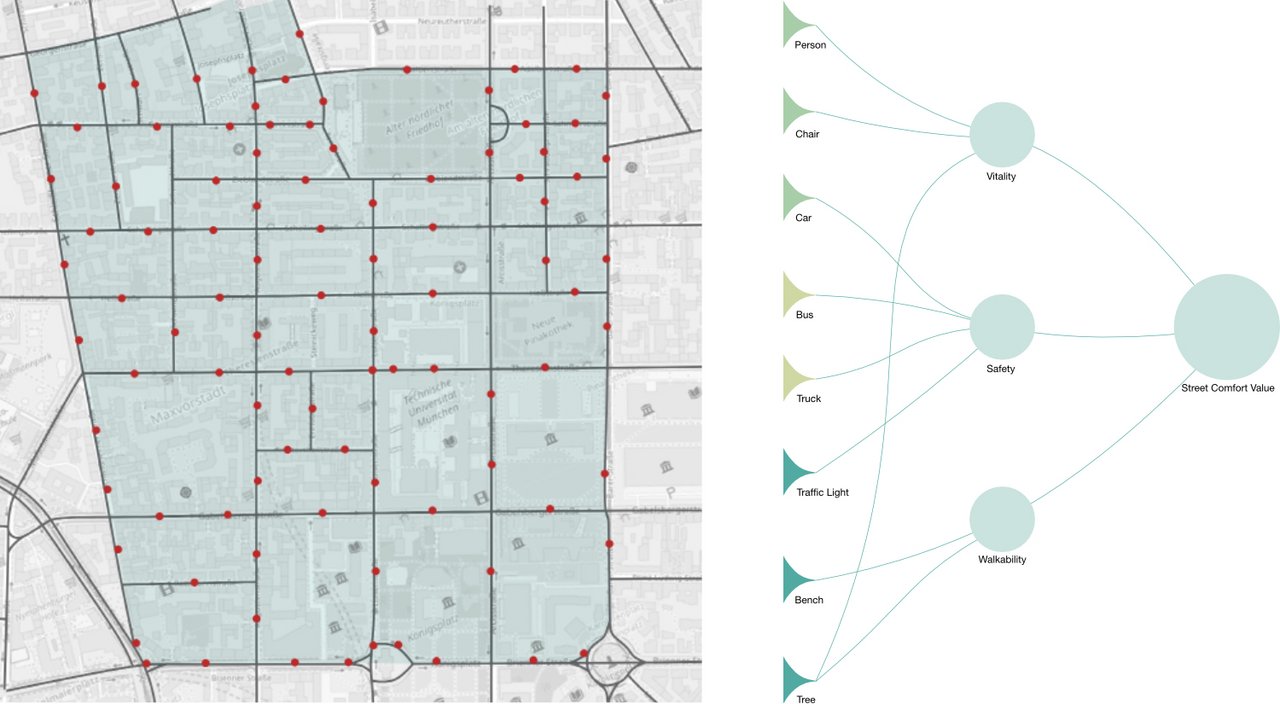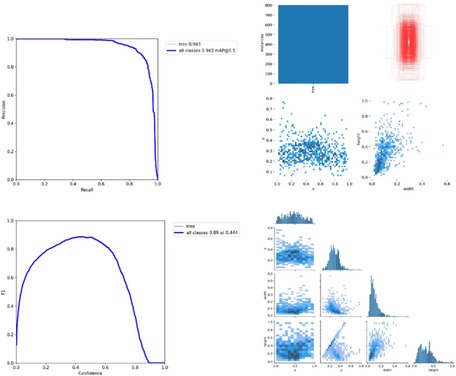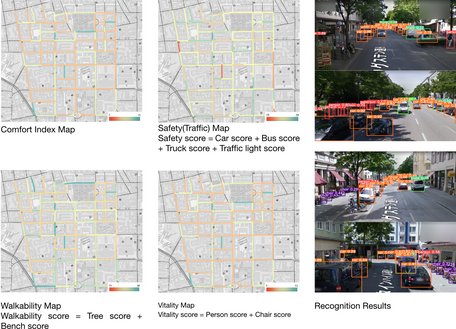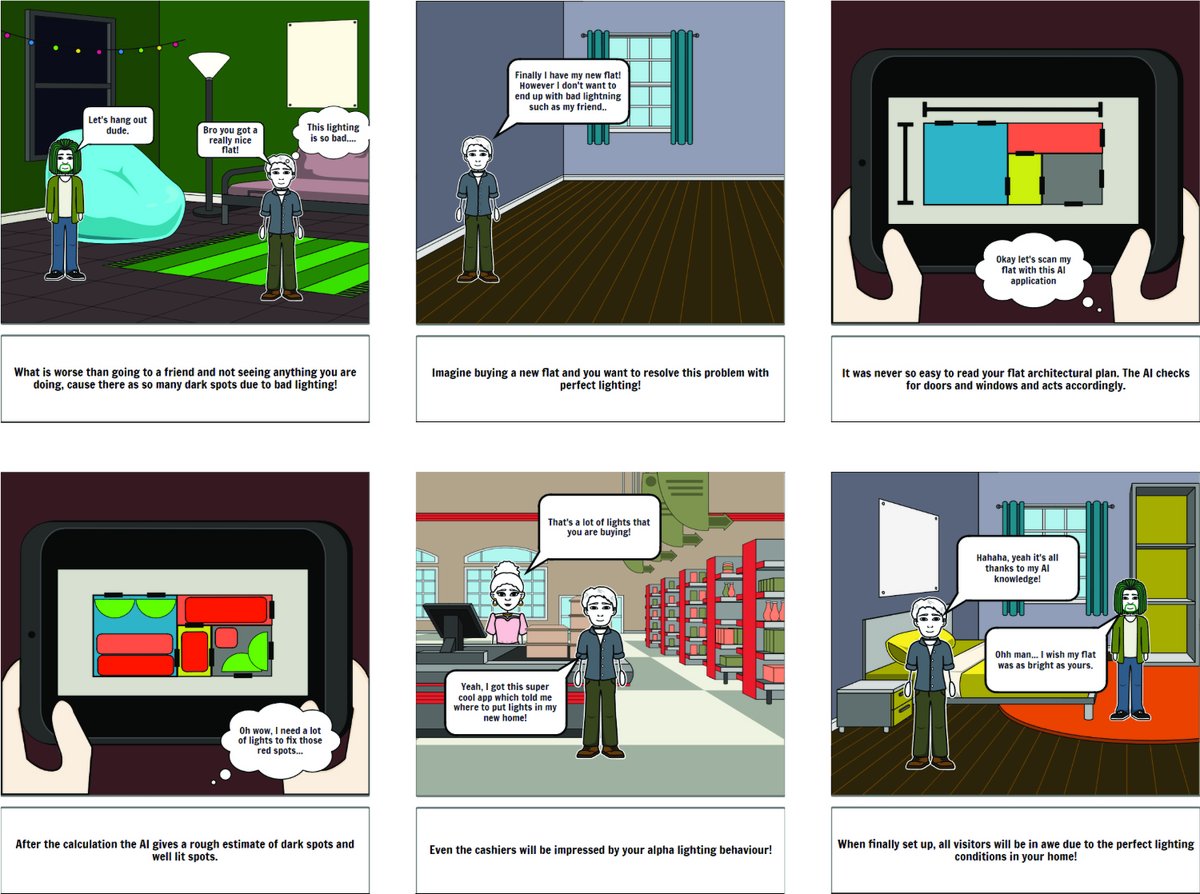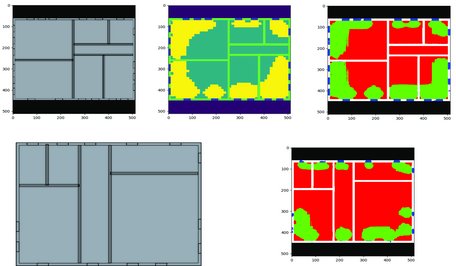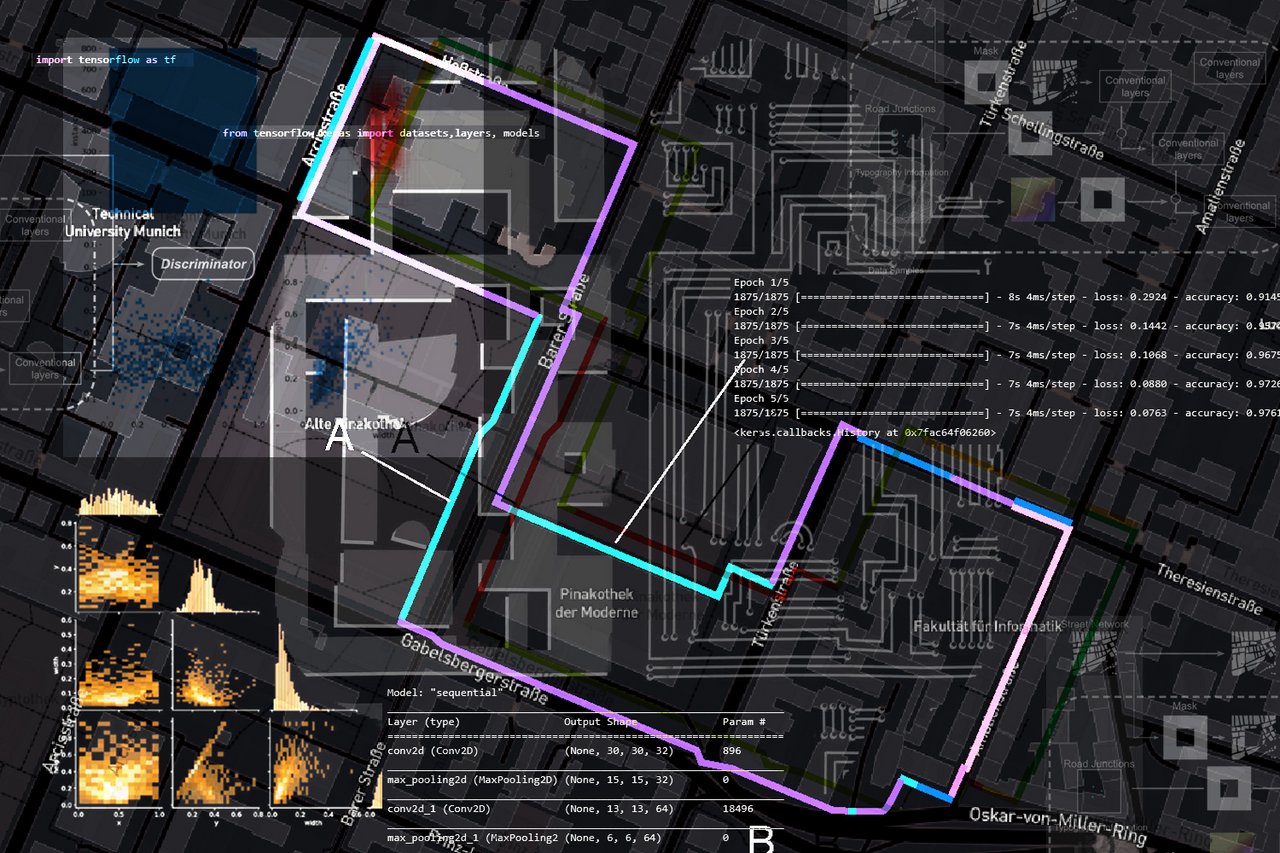
Algorithmic Design
Elective Module in winter semester
Prof. Frank Petzold
Ivan Bratoev, M.Sc.
The Course “Algorithmic Design” explores the role and application of artificial intelligence approaches and methods into all facets of architecture.
Throughout the semester students will explore various existing applications and research done in the field of A.I. in architecture. Such methods will range from simple classifications of plans and facades, touch upon the segmentation and recognition of various objects within images, explore the capabilities of A.I. methods to predict simulation outcomes and transform data from one type into others, e.g. from CAD drawings into BIM models. The course will also explore and learn of the importance of data preparation for A.I. methods.
The course will provide the students with an introduction into basic and more advance concepts of programming with Python and with the help of existing software libraries, such as Tensorflow, develop their own A.I. methods and algorithms.
The course is scheduled to happen as a hybrid lecture, happening in person and being streamed over Zoom. For participants not able to take part in the in person classes, they will need a computer capable of running Python and Tensorflow.
Schnell ans Ziel
Liubov Kniazeva, Vanessa Magloire
Since cyclists, skaters, and pedestrians have different requirements for the surface, this project uses AI to analyze different surface conditions of pedestrian paths and their influence on comfort and driveability in relation to the time needed to cover the distance. To achieve this, the smoothness index is defined, which assigns a value to each surface in a picture, to describe how comfortable a path is. The main goal is to create a tool that maps this information, and gives the different users the possibility to choose the most comfortable route, and make their individual experience of the city more enjoyable.
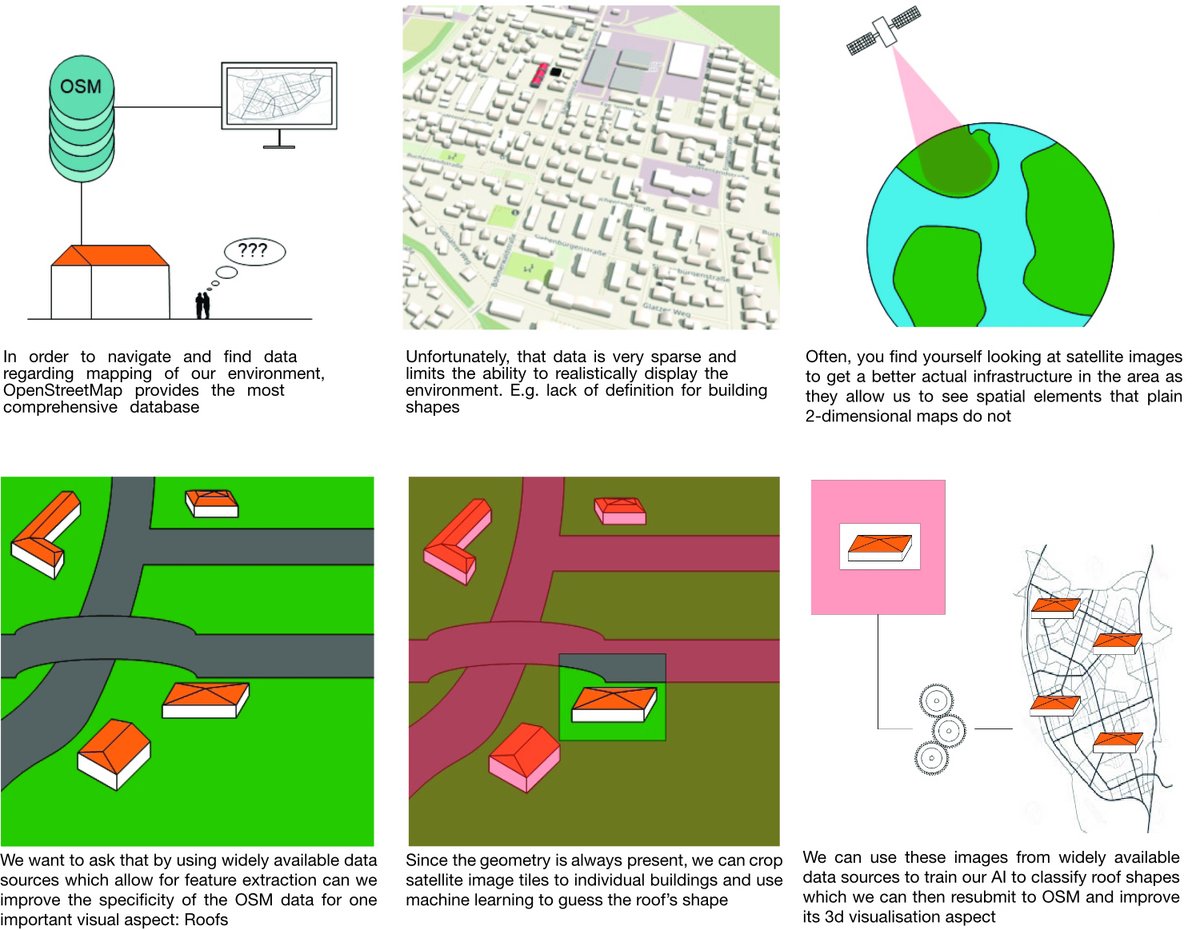
Improving the availability of roof shape information in OpenStreetMap
Wolfgang Hobmaier, Aaron Farrell
The goal of the project is to help to solve a problem which is present in much of modern mapping at the moment. Much of modern mapping is still solely focused on two dimensions with three dimensional aspects of visualisation being neglected. Having a 3 dimensional marker such as the shape of a roof can help to very quickly locate a place or orient yourself in an area. This data is very limited at present, however it is something that is tagged on OSM. This project tries to improve this situation by using image classification to determine the roof shapes of buildings. This prediction would be based on some the available tags for roof shapes in OSM and this data can then be used to tag buildings in OSM. Which in turn will help to improve the situation.
Generative Adversarial Networks Based Urban Design
Rong Peng, Da Xu
In recent years, rapid advances in big data and artificial intelligence techniques have opened new opportunities for architects and urban planners to deeply understand the development and design of our cities. The goal of this project was to investigate the impact of topography on a city‘s development and roads design and to build a GAN-based street network generation model. To achieve this, three different deep learning algorithmic models were tested and compared.
Evaluation of Street Comfort Based on Google Street View Map and Machine Learning
Yuqiao Sun, Qingyu Xue
The project focuses on evaluation of the spatial comfort of urban streets: firstly by scientifically formulating evaluation criteria and quantifying them as a quantitative assessment of the detected objects, secondly by realising the recognition of target objects based on the yolov5 algorithm, and finally by drawing a heat map of comfort in an urban area in Munich as an example and giving suggestions for quality improvement based on the results.
Office Illumination AI
Fabian Danisch, Eric Esch
This project focuses on relieving the architect of some of his work, by replacing the simulation with an AI-generated segmentation, which tells the user, which spots need more lighting such as artificial lighting or a new set of windows.
